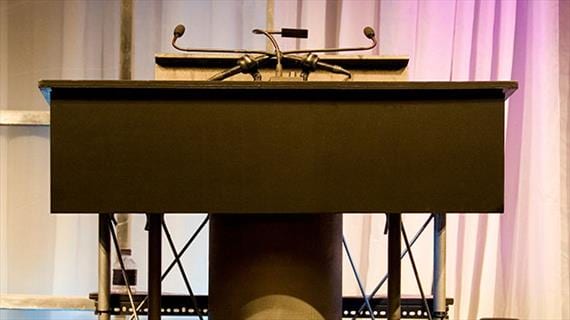Our guest blogger, Peggy James, blogs weekly for The Gateway.
Prime time shows were bumped (gasp!) this past week to make time for the national coverage of the first presidential debate for this election. Students who had the chance to see this formal debate on television might have come away with questions about the candidates’ political views and about the debate itself. If they followed the news or social media sites afterward, they have seen and heard opinions from all different sides of the issues. A presidential election year is the perfect time to harness the topic of debate and connect students’ lives to the political issues being argued.
The study of debate is ordinarily limited to high school language arts and social studies classrooms. The topic is sometimes introduced briefly in middle school or junior high, but the majority of students’ debate practice before high school is from the casual debates that come up during impromptu discussions with peers (not the style of debate that is likely to help them later in life!). During campaigns leading up to major elections, students have many opportunities to witness live structured debates in person or on television. Hopefully, the coverage of these debates will pique your students’ interest in the topic and provide a natural link between political issues and your classroom. Understanding the ins and outs of these debates will help your students become well-informed citizens and voters.
Perhaps you are not a language arts or social studies teacher. Perhaps you teach elementary school or a secondary subject where debate doesn’t seem to fit in. This week’s column is dedicated to fitting debate into the puzzle of your everyday curriculum. I hope you find something you like! Joann has more ideas in her column (linked below) and more resources will be posted daily on the Gateway Facebook and Twitter pages.
Debatable issues surround us each day. Why not let your students get a little taste of debate during elementary school with a light and fun topic? Using Fairy Tales to Debate Ethics will help kids organize their arguments and as they think about ethical issues from Puss in Boots and Jack and the Beanstalk. The resource includes a link to an article with more ideas for using classic fairy tales in debates. Practicing this type of decision-making will help students later when the study debate in depth. It will also help students in their everyday decision-making.
Many science and math classrooms require more rote memorization and drills than problem solving. Students and teachers in these classrooms can sometimes get stuck in a “rut” of the lecture, practice, and homework routine. In What’s Wrong with Nuclear Power Anyway?, students are challenged to go beyond learning about nuclear power and how it works. The resource requires them to think about the benefits and consequences of advancing energy technology in different directions. Many students have heard of nuclear power. They probably remember the world scare when a tsunami struck Japan, damaging a nuclear power plant. Debating nuclear energy will help them learn more about this type of energy and will challenge them to create arguments to support their opinion either for or against using it to power our country.
For more resource ideas for the science classroom, try starting your search here.
If you want debate ideas for a health classroom, you should be able to find some neat ideas here. Have a wonderful week, and remember: Your students will want to debate with you too…so get some practice!
